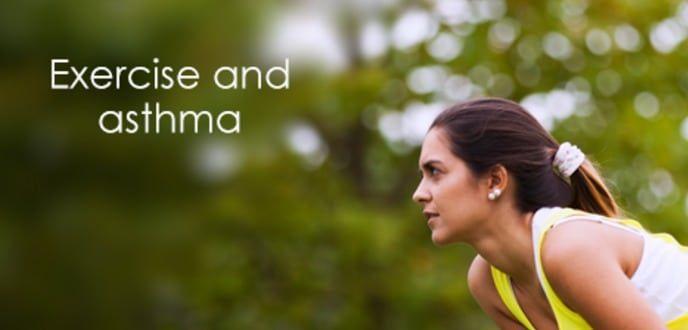
Physical exercise and asthma
When we inhale, the chest expands, increasing our breathing capacity and lung volume.
The asthmatic inhales normally, but the constriction and inflammation of the airways make exhalation difficult.
When the asthmatic tries to exhale, the airways collapse and trap air in the lungs, resulting in a reduction in the amount of clean air inhaled in the next breath.
Overall, most cases of asthma are due to a combination of allergic and non-allergic triggers.
The most well-known allergens that cause asthma through inhalation are house dust mites and pollen.
Non-allergic triggers of asthma include cold, dry air and exercise.
As the airways during an asthma attack narrow and become smaller, symptoms such as:
- Coughing
- Wheezing (a whistling noise when the person breathes)
- Chest compression (feeling like someone is squeezing the chest)
- Shortness of breath.
A person can have all of these symptoms or some of them, these symptoms can be mild or severe.
Asthma when not controlled can cause many problems, but it can be controlled very well with the help of the specialist doctor.
The symptoms may be controlled but the asthma is still there and the only thing that goes away is the symptoms.
Asthma cannot be cured, so the asthmatic must make asthma care a part of their life, even if their asthma presents with mild symptoms.
Exercise-induced asthma
For some people exercise may be the only cause of asthma symptoms.
The onset of symptoms, coughing, shortness of breath, wheezing or chest tightness may be due to exercise-induced asthma.
In addition to the above, symptoms such as fatigue, reduced endurance and prolonged post-exercise recovery can also occur during or after exercise.
Symptoms peak about five to ten minutes after exercise ends and usually stop within 20 to 30 minutes, they can occur even if someone takes their medication.
Benefits of exercise
Improving cardiovascular capacity and strengthening the muscles involved in breathing will help the asthmatic in his daily activities.
When asthma control is good, the asthmatic can exercise without particular problems, especially if we follow the following parameters:
- An extended warm-up period of 10 to 15 minutes per hour will help relax the respiratory muscles and widen the airways and make breathing easier.
- If a person comes from a cold environment, he must spend some time in the new temperature of the place where he will exercise.
- Low-intensity, long-duration exercise is the best choice for asthmatics.
- If we want to increase the intensity of the exercise then we choose an interval training method such as the Fartlek method.
- The asthmatic must consume adequate amounts of water both during exercise and throughout the 24-hour period.
- The asthmatic should breathe through the nose as much as possible during exercise.
- We control the intensity of exercise using speech control, the asthmatic should be able to present normal speech during exercise.
- If a person suffers from exercise-induced asthma they should take a dose of a bronchodilator medicine one hour before starting exercise or if necessary immediately before starting exercise.
- If a person is forced to stop exercising because of an asthma attack, they should immediately take a dose of a bronchodilator and be placed in a position where they can breathe comfortably.
Forced Exhalation Test
The forced exhalation test with a flow meter can be used to assess the status of asthma before exercise.
Rheometer values decrease when asthma worsens or is out of control, while rheometer values increase when treatment is working well and airways remain open.
Using the rheometer readings will help you understand when you are in good shape and do not need to use an inhaler before exercise, or when you are not in good shape and need to use an inhaler immediately.
You must always use the same flowmeter to be sure that the changes in readings are absolutely correct
Scientific editing of the text: Giorgos Skolias, MSc Occupational Physiologist

No Comments